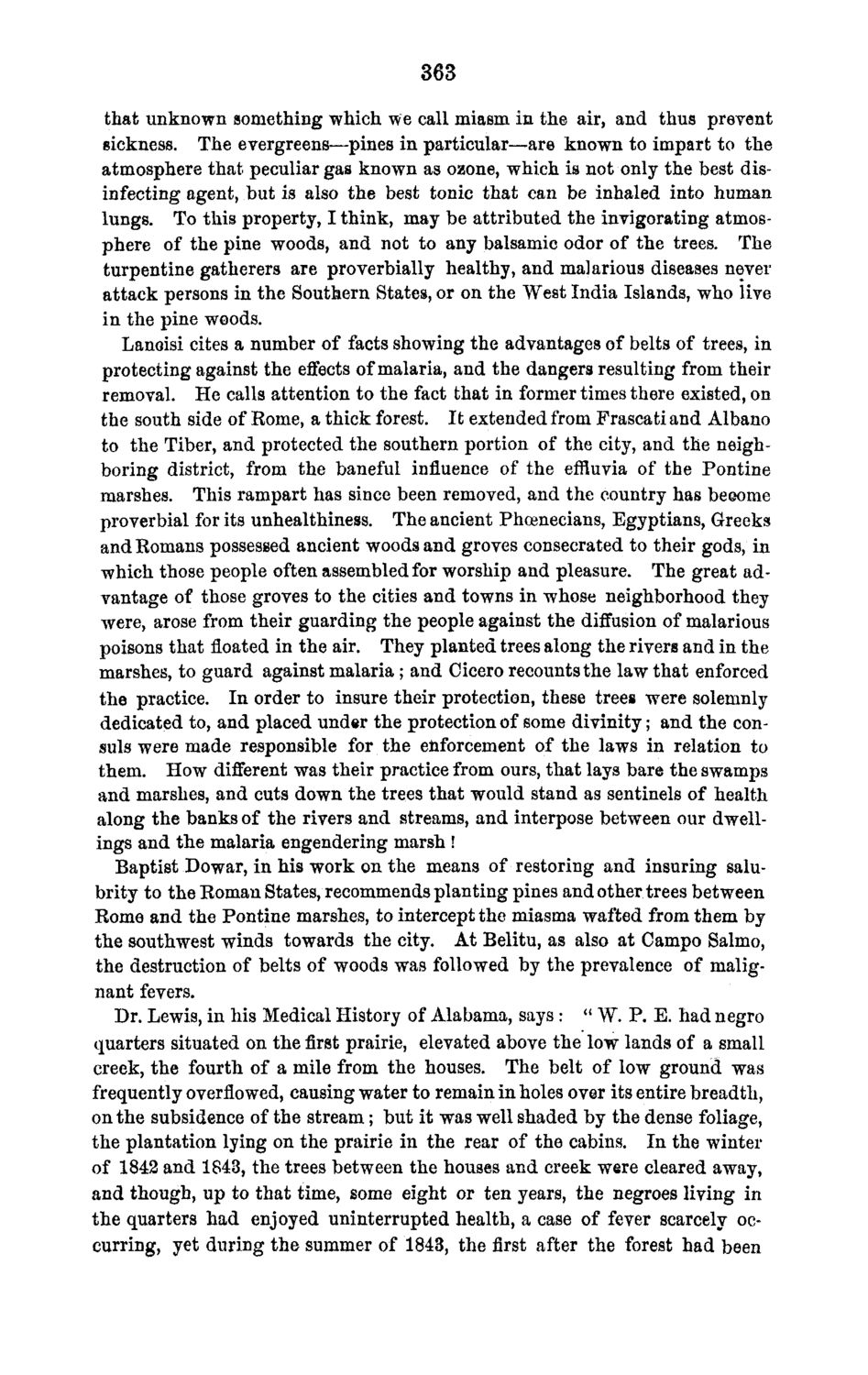| |
| |
Caption: Board of Trustees Minutes - 1870
This is a reduced-resolution page image for fast online browsing.

EXTRACTED TEXT FROM PAGE:
363 that unknown something which we call miasm in the air, and thus prevent sickness. The evergreens—pines in particular—are known to impart to the atmosphere that peculiar gas known as ozone, which is not only the best disinfecting agent, but is also the best tonic that can be inhaled into human lungs. To this property, I think, may be attributed the invigorating atmosphere of the pine woods, and not to any balsamic odor of the trees. The turpentine gatherers are proverbially healthy, and malarious diseases never attack persons in the Southern States, or on the West India Islands, who live in the pine woods. Lanoisi cites a number of facts showing the advantages of belts of trees, in protecting against the effects of malaria, and the dangers resulting from their removal. He calls attention to the fact that in former times there existed, on the south side of Rome, a thick forest. It extended from Frascati and Albano to the Tiber, and protected the southern portion of the city, and the neighboring district, from the baneful influence of the effluvia of the Pontine marshes. This rampart has since been removed, and the country has beeome proverbial for its unhealthiness. The ancient Phcenecians, Egyptians, Greeks and Romans possessed ancient woods and groves consecrated to their gods, in which those people often assembled for worship and pleasure. The great advantage of those groves to the cities and towns in whose neighborhood they were, arose from their guarding the people against the diffusion of malarious poisons that floated in the air. They planted trees along the rivers and in the marshes, to guard against malaria; and Cicero recounts the law that enforced the practice. In order to insure their protection, these trees were solemnly dedicated to, and placed under the protection of some divinity; and the consuls were made responsible for the enforcement of the laws in relation to them. How different was their practice from ours, that lays bare the swamps and marshes, and cuts down the trees that would stand as sentinels of health along the banks of the rivers and streams, and interpose between our dwellings and the malaria engendering marsh ! Baptist Dowar, in his work on the means of restoring and insuring salubrity to the Roman States, recommends planting pines and other trees between Rome and the Pontine marshes, to intercept the miasma wafted from them by the southwest winds towards the city. At Belitu, as also at Campo Salmo, the destruction of belts of woods was followed by the prevalence of malignant fevers. Dr. Lewis, in his Medical History of Alabama, says : " W. P. E. had negro quarters situated on the first prairie, elevated above the low lands of a small creek, the fourth of a mile from the houses. The belt of low ground was frequently overflowed, causing water to remain in holes over its entire breadth, on the subsidence of the stream; but it was well shaded by the dense foliage, the plantation lying on the prairie in the rear of the cabins. In the winter of 1842 and 1843, the trees between the houses and creek were cleared away, and though, up to that time, some eight or ten years, the negroes living in the quarters had enjoyed uninterrupted health, a case of fever scarcely occurring, yet during the summer of 1843, the first after the forest had been
| |